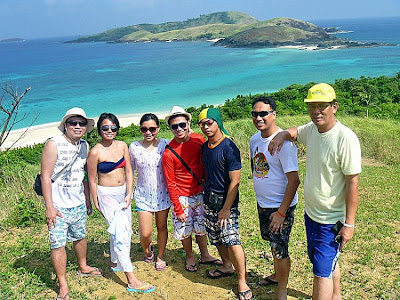 |
| Nipa palms along the Busig-on River |
We left Quinamanukan Island by 3:15 PM, the mainland just a 30-40 min. boat ride away. Upon reaching the mainland, our boat made its way inland via the wide but sometimes shallow Busig-on River (the province’s longest river system), its muddy banks lined with nipa and coconut palms and backdropped by the 997 m. high Mt. Balagbag (known as the “Sleeping Giant”). Every now and then, small, outrigger-less and high-bowed bancas would pass us by. After negotiating a bend in the river, we finally reached port by 4:30 PM. Amable Miranda of the Camarines NorteTourism Office was already waiting for us there. After dining on angko, a local delicacy I bought and shared with the others, Amable drove us to Tabea Reichan Restaurant at Vinzons town proper where we had our “late” lunch. After picking up our luggage at the Municipal Guest House along Bagasbas Blvd. in Daet, Amable drove us to the nearby, upscale Bagasbas Lighthouse Resort, Daet’s premier resort, where we were to stay (my second) for two days.
Tabea Reichan Restaurant: Poblacion (just across the municipal hall), Vinzons, Camarines Norte
Bagasbas Lighthouse Hotel Resort: Bagasbas Blvd., Daet, Camarines Norte. Tel: (054) 441-5855. Mobile number: (0916) 520-6783. E-mail: info@bagasbaslighthouse.com. Website: www.bagasbaslighthouse.com.





































